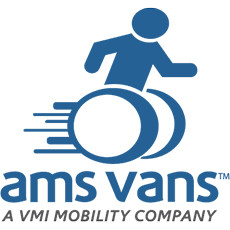Service dogs can be life-changing tools. From medical alert capabilities to anxiety reduction and beyond, service dogs can benefit individuals with a broad range of diagnoses and needs.
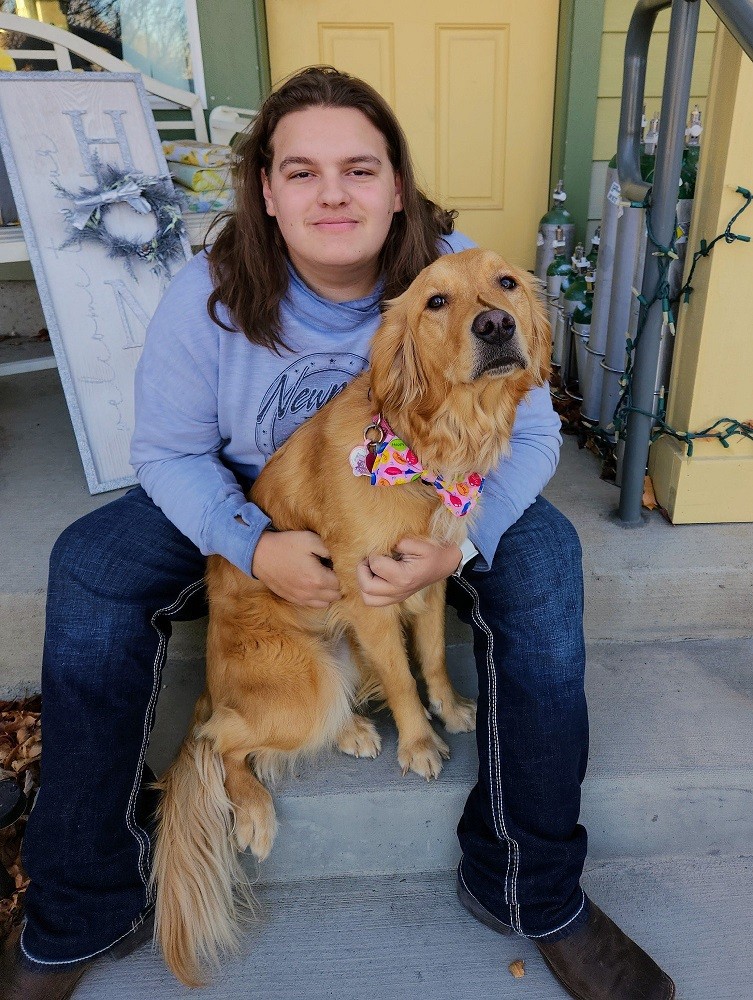
At Help Hope Live, we can help individuals and families to fundraise for the out-of-pocket costs associated with acquiring and training a service dog.
We know many of our clients have questions about how a service dog can help and how to get started. That’s why we invited panelists Kristin Hartness of Canines for Disabled Kids and Angela Rozewski, mom of our client Stryder Doescher, to join us for a Hope Talk.
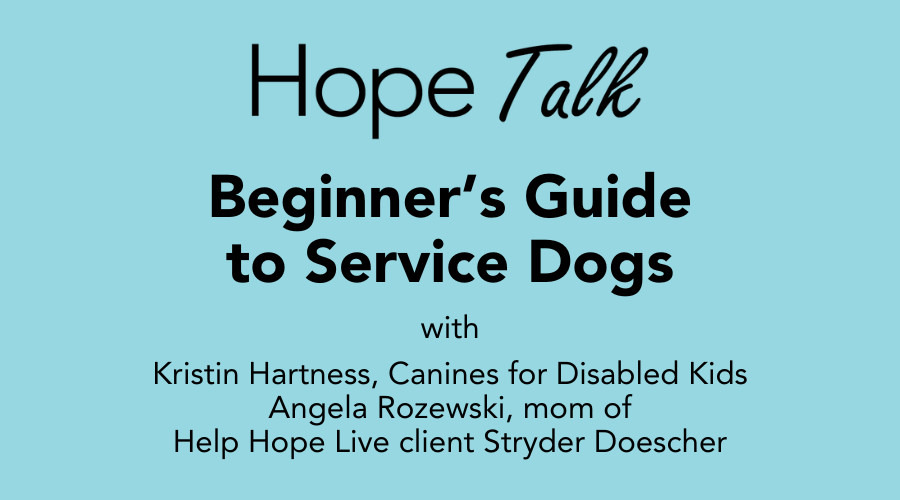
See the full Hope Talk below on YouTube, or scroll down to read our top takeaways.
FAQs About Service Dogs
Here are some of the top questions about service dogs that our panelists answered.
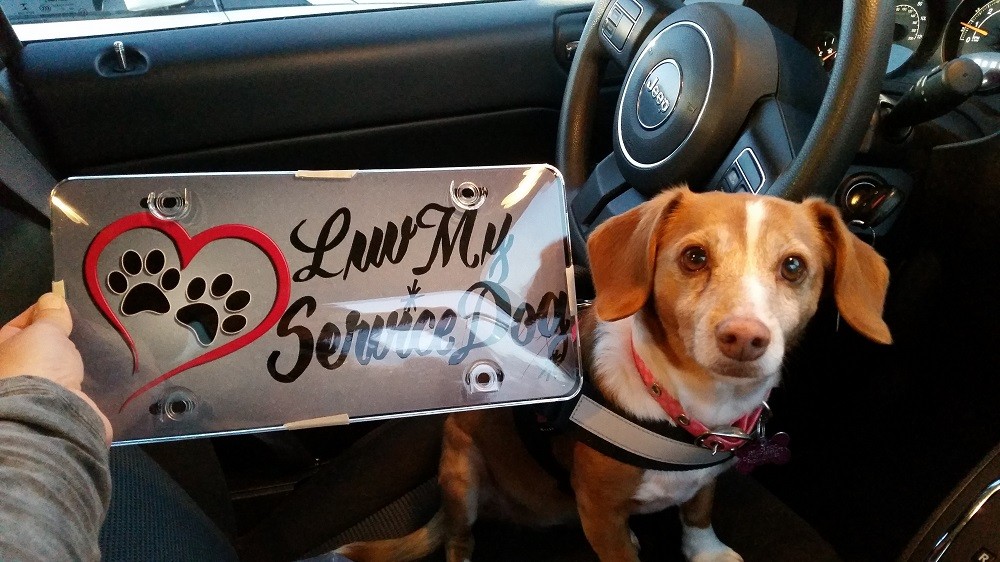
What can a service dog do for me?
Service dogs can provide a huge range of support services to their handlers. As Kristin explained:
“They are living tools.”
Comparable to a wheelchair or a pair of glasses, service dogs are intended to enhance your ability to access and engage with the world around you.
Depending on the service dog and the training that the dog receives, service dogs can help with medical alerts, physical stability, retrieving items, opening doors, reducing anxiety, and much more.
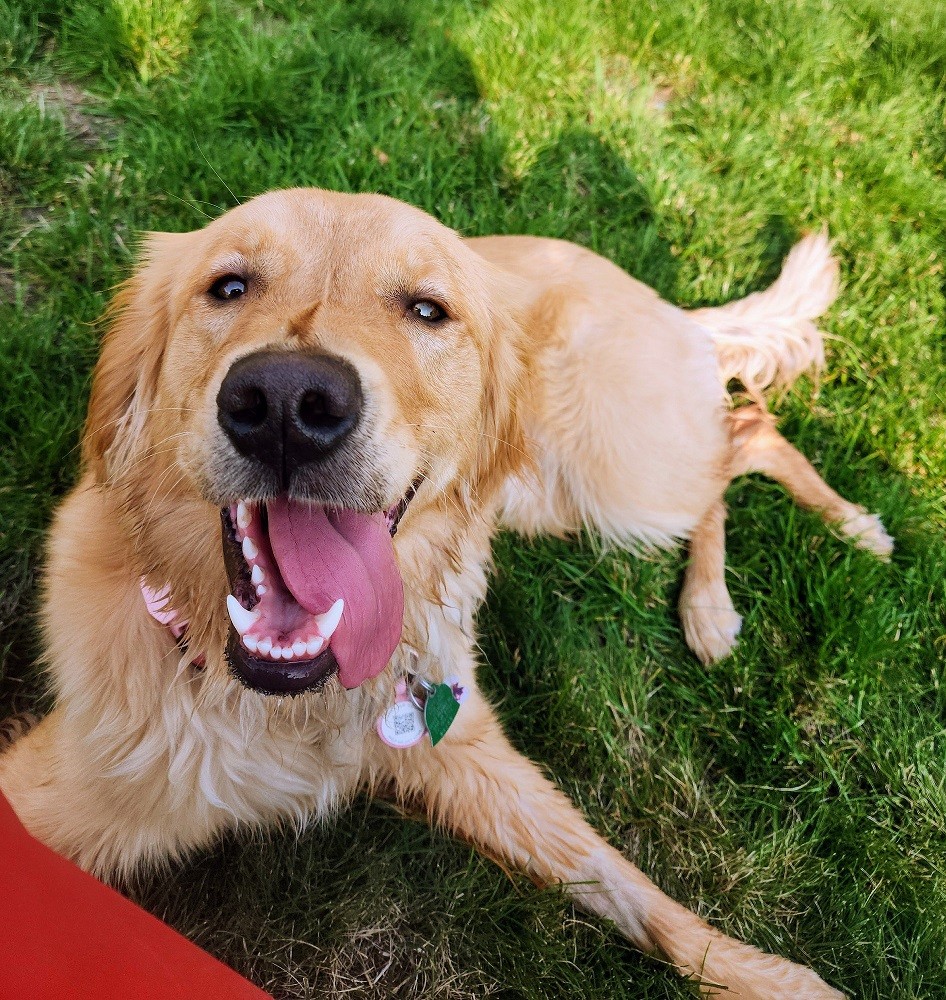
How long does service dog training take?
Kristin explained that it will take a few weeks just to do your research and start a conversation with a professional or training program.
You will look for a match for your needs in terms of what a service dog program can offer, how much it costs, where they are located, and whether their training suits your needs.
You will need to apply and be accepted to a particular program once you find a match for you. You can apply for grants or scholarships to help with the cost, and you can fundraise to help afford the cost of a service dog and training.
Once you have been accepted to a program and have funded the program, the training process can take about two years.
However, Kristin also explained that training and caring for a service dog is a lifelong process—not a one-off training.
Your needs or your service dog’s capabilities may change over time. That means training is a dynamic process for you and your service dog.
In Stryder’s case, as Angela explained, their initial priority was securing a service dog who could alert them if Stryder might be experiencing a seizure. Over time, the service dog was able to help with mobility guidance, opening doors, and picking up items for Stryder as he used a wheelchair.
Later on, their service dog learned other helpful skills, including detecting when Stryder had low blood pressure or a slowed pulse.
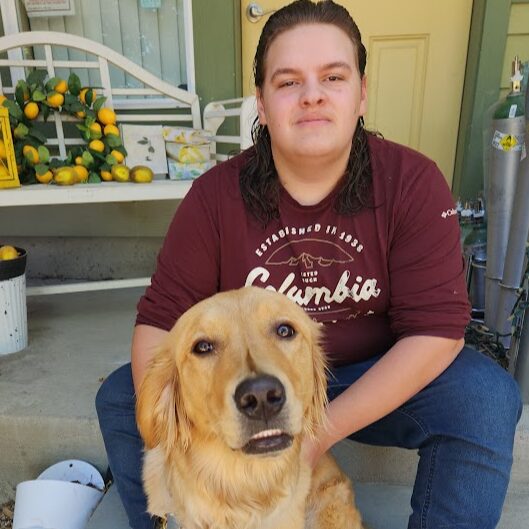
How does service dog training work?
Kristin explained that service dog training can take different forms depending on the program you choose. You may engage in owner-assist training, in which you get a service dog and take part directly in training from the beginning.
You may also get a pre-trained service dog and then spend additional time getting the dog accustomed to your needs and capabilities.
Kristin recommended taking the time to find a training program that fits what you want our of your service dog:
“So much depends on working with a responsible training program that can adapt to your abilities and your resources.”
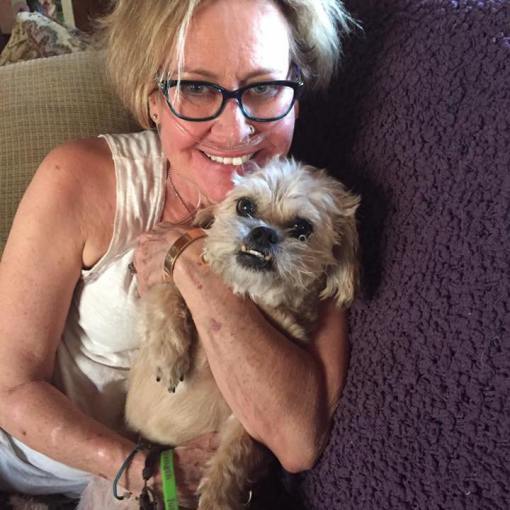
Where do I find a service dog, program, or trainer?
Kristin made it clear that no single service dog trainer, program, or resource is perfect—but one good place to start is Assistance Dogs International, a nonprofit that service dog trainers can voluntarily join to help increase their credibility.
A service dog trainer or program does not need to be accredited by the organization to be a good fit for you.
Reach out to Canines for Disabled Kids for help figuring out your first step towards choosing a reliable and reputable service dog resource or trainer.
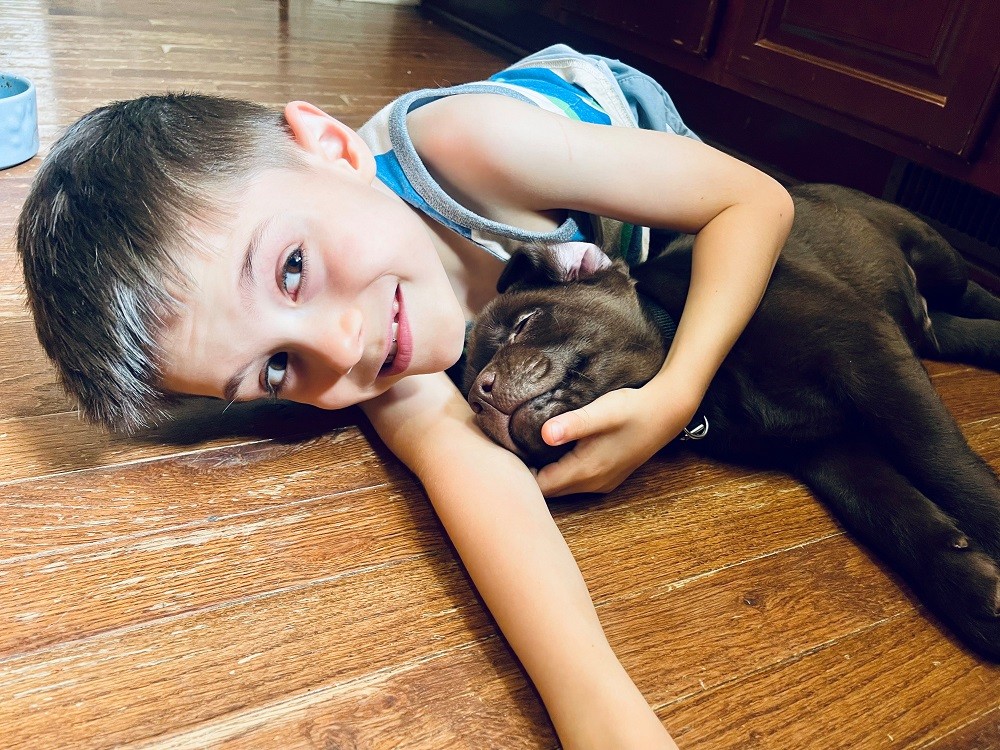
What kind of care needs do I need to think about before I get a service dog?
Beyond service dog training, you will need to prepare for all the care and training associated with owning a dog—plus some unique additional care considerations that come with having a dog accompany you everywhere you go.
Some of those care needs include regular vet visits and medications, walks and bathroom breaks, and supplies for on-the-go needs.
Angela explained that Stryder’s service dogs have trained to not use the bathroom during their “working day”—such as while Stryder is at school or while they are accompanying the family on a trip. They’ve also been trained to become comfortable relieving themselves even when there is no grass or open space available, such as on a sidewalk.
Though Angela explained they have not yet had an accident with either of their service dogs, they still take puppy pads, cleaning wipes, and sprays everywhere they go just in case.
At home, Angela cleans up dog waste and walks the dogs since Stryder, the primary handler, can’t do so.
Kristen adds that planning out feeding cycles and routines is an important training step to ensure a service dogs knows where and when to use the bathroom.
If you will be the sole handler of your service dog, you can consider the accommodations or tools you may require to care for your dog’s needs.
You can receive training on how to clean up after a service dog, for example, if you are living with limited or no sight, use a wheelchair or other mobility device, or require adaptive tools such as a modified poop scooper.
You can also plan to pay for a dog walker, pet waste cleaning service, and similar resources to make caring for your service dog more accessible to you.
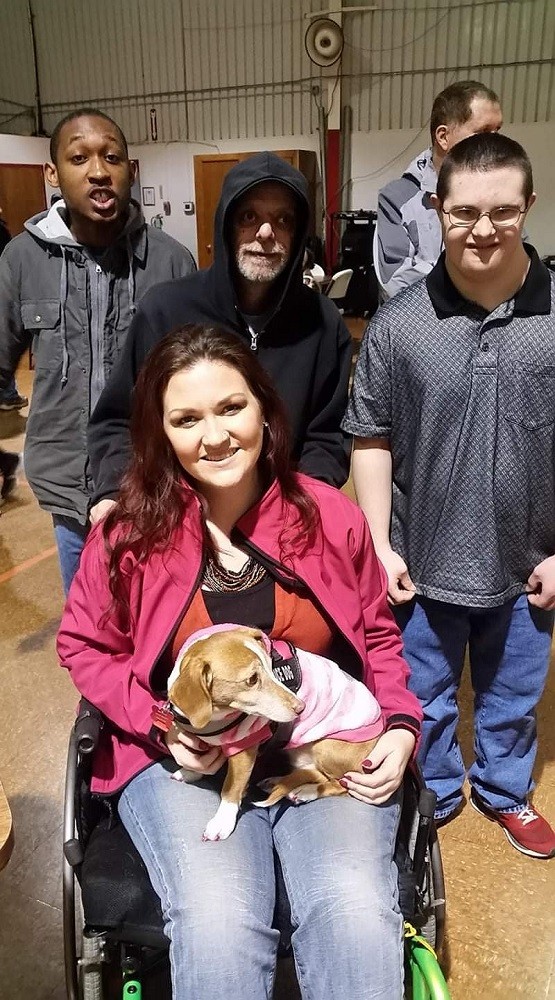
Will I be my service dog’s primary handler?
It’s important to know that a service dog is intended to be a working tool specifically for you—and just for you. As Kristin explained:
“This is not a family dog.”
Even if you may not be your service dog’s only handler in the beginning, the goal should be for you to eventually be the only handler for your service dog.
That direct relationship is important not just for your service dog’s training but for your own sense of independence, autonomy, and privacy.
As Kristin explained:
“Your backup handler can know what they need to know, but they won’t know what they don’t need to know.”
In that way, a service dog becomes a working tool that is bound to you and not dependent on another handler or your entire family.
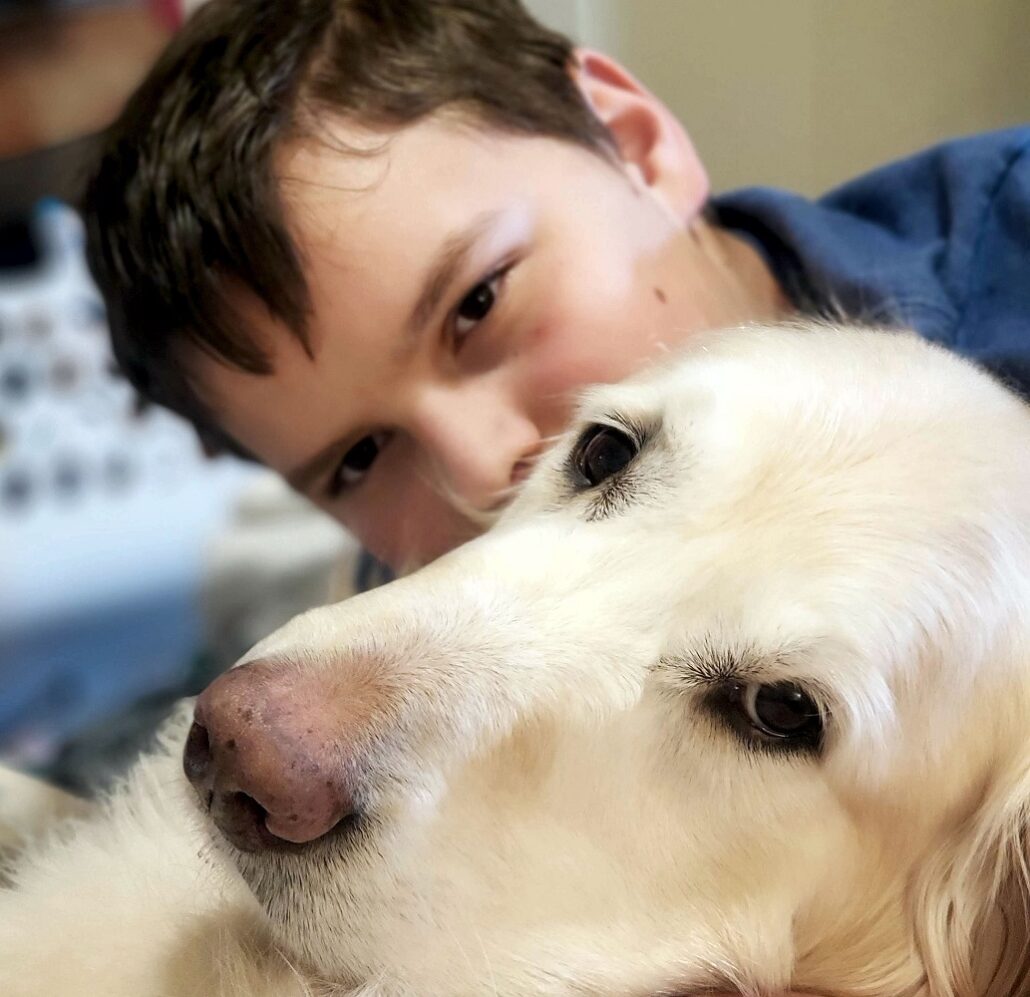
What if I can’t handle or care for a service dog on my own?
If age or medical needs will make it difficult for you to be the primary handler for your service dog right away, you can work with a training program to train a second handler or backup handler.
Kristin shared that most service dogs are trained specifically to have just one primary handler.
So even if you start out having a backup handler (or two backup handlers if you have two parents or guardians who will help you), over time, you will want to transition to working in an independent partnership with your service dog where you shift to being the dog’s primary handler.
In Stryder’s case, Angela shared that he began training with a service dog when he was in kindergarten. He was not old enough or physically strong enough to handle a service dog on his own, so he received help.
However, by high school, Stryder had transitioned to being his service dog’s primary handler and sole handler.
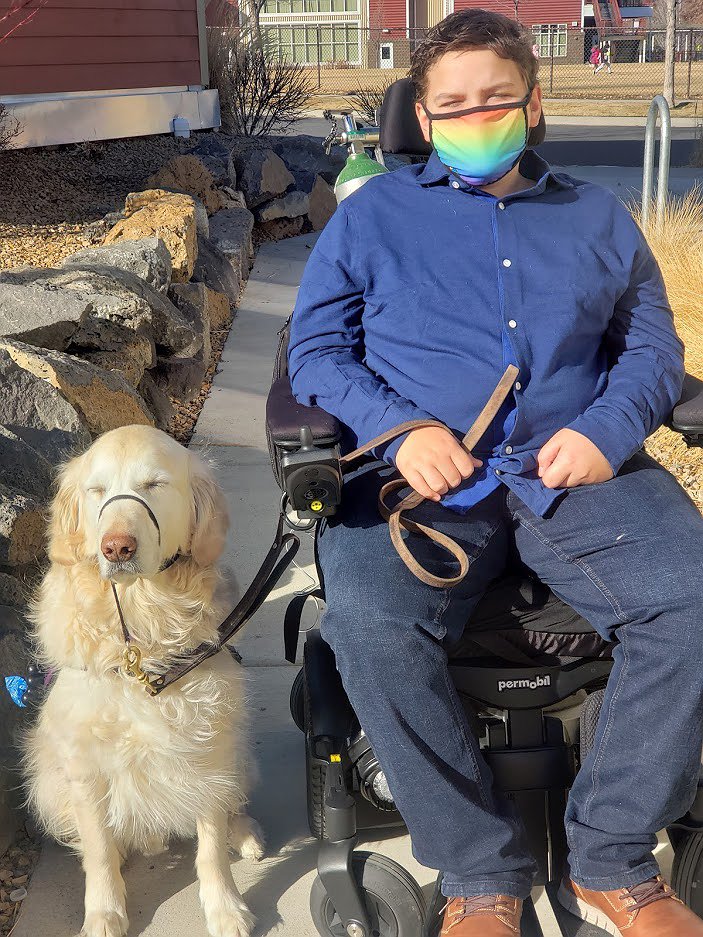
How will I communicate with my service dog?
There are many different ways to communicate with a service dog that will be unique to you.
You may use verbal cues, hand signals, technology-based cues, or other customized ways of connecting with your service dog.
Angela explained that Stryder is not a frequent out-loud communicator, and he and his service dogs primary operate through one-word cues and hand signals that are unique to Stryder.
This bond and communication pathway is so unique that Angela said it can be difficult to even understand their communication from the outside—but for Stryder, it perfectly fits his capabilities, his preferences, and his relationship with his service dog.
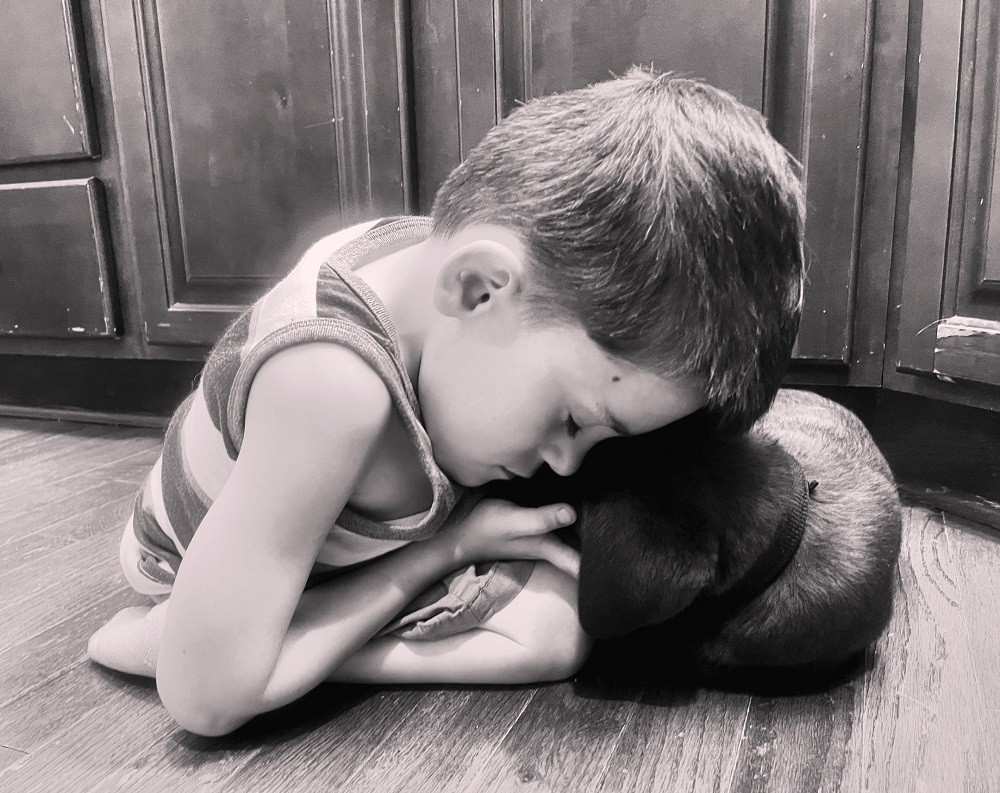
Will I need to train more than one service dog?
Angela shared that she and Stryder had one service dog in their household for a decade before they began training another service dog to take over those responsibilities in the future.
Training the new service dog alongside Stryder’s existing service dog gave them a unique opportunity to understand the new service dog’s personality and unique capabilities. It helped the learning process for the new service dog to be able to observe and participate in Stryder’s existing service dog trainings and routines.

Are all service dogs similar in personality and capabilities?
No: all service dogs are unique not just in terms of their capabilities and skills but also in terms of their personality and aptitude.
Angela shared that Stryder’s new service dog has higher energy and is a fast learner. Some dogs have a natural proclivity to certain trainings or skills, and not every service dog can do every task.
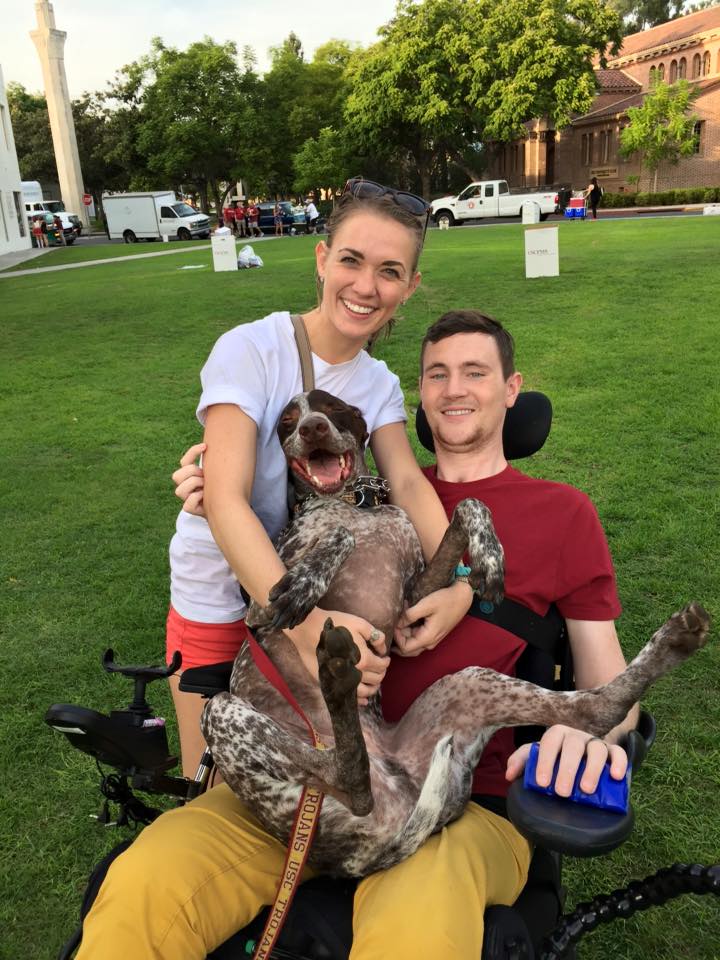
Do all service dogs complete their training successfully?
No: not all service dogs complete their trainings. “There is such a thing as an unsuccessful service dog,” explained Kristin:
“Each service dog only has about a 50% chance of successful training.”
A service dog’s success may depend on aptitude, personality, capabilities, and other unique traits and skills. “These animals should be getting perfect scores on all their tests,” Kristin advised:
“Do not sacrifice or say that a certain service dog is good enough.”
It requires patience and diligence not just to complete training with a service dog but also to take the time to understand whether a particular service dog will be the right match for you and be considered a “successful service dog” for your needs.
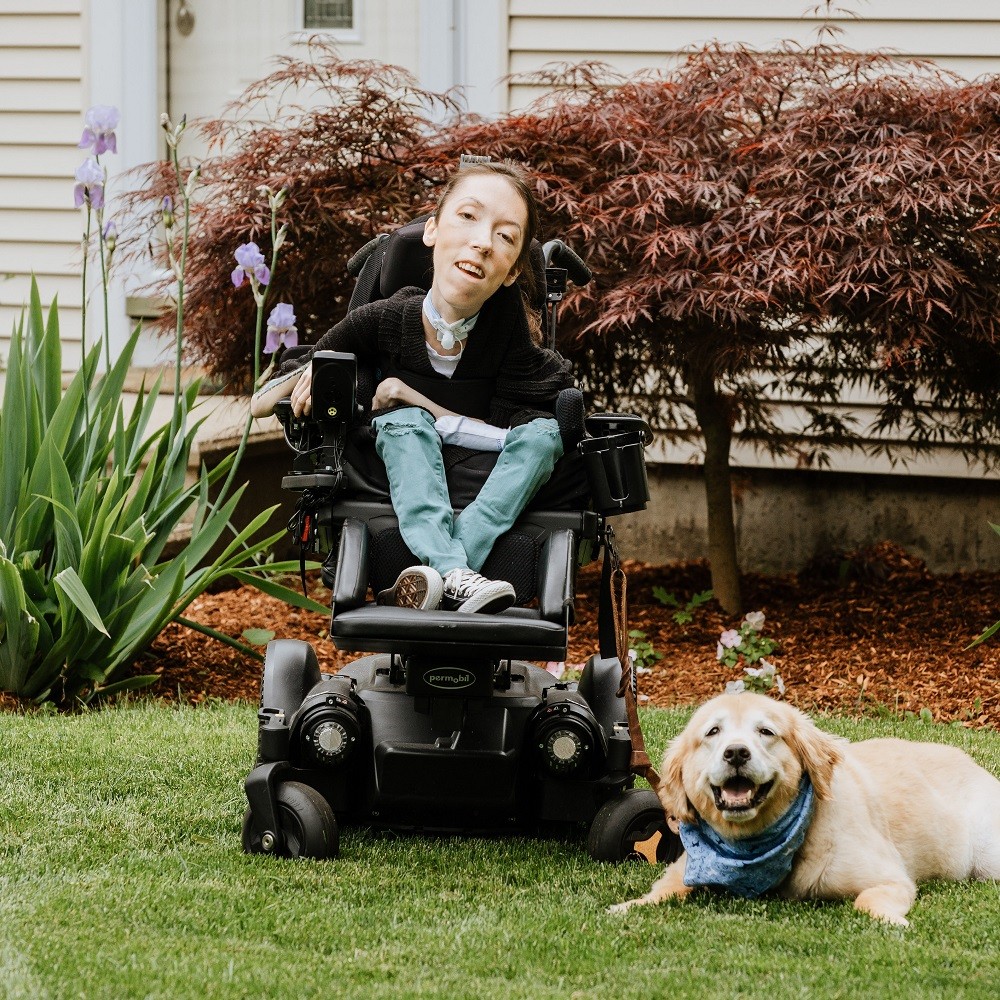
Will my service dog be allowed in public spaces?
Kristin explained that service dogs are permitted in environments such as schools, businesses, and restaurants because they are considered a tool—and that tool needs to be “working and under our control.”
While licensed service dogs may be permitted in many locations under the Americans with Disabilities Act, it’s important to realize that these locations are not taking over the responsibility for the care and behavior of those service dogs.
Service dogs must be permitted in most spaces, but only if they are under a handler’s control as well as leashed or harnessed.
Businesses can’t ask for proof of a service dog’s legitimacy, such as documentation or a license, and they also can’t ask you what your disability or diagnosis is. What they can do is refuse access to a service dog that is out of control or not housebroken.
As the primary handler, it will be your responsibility to guarantee that you can keep your service dog working and under your control as a tool for your access while you are in any public or private space.
If you can’t keep your service dog safe, under control, and on task in these situations, you will need a backup handler to be available to help you.
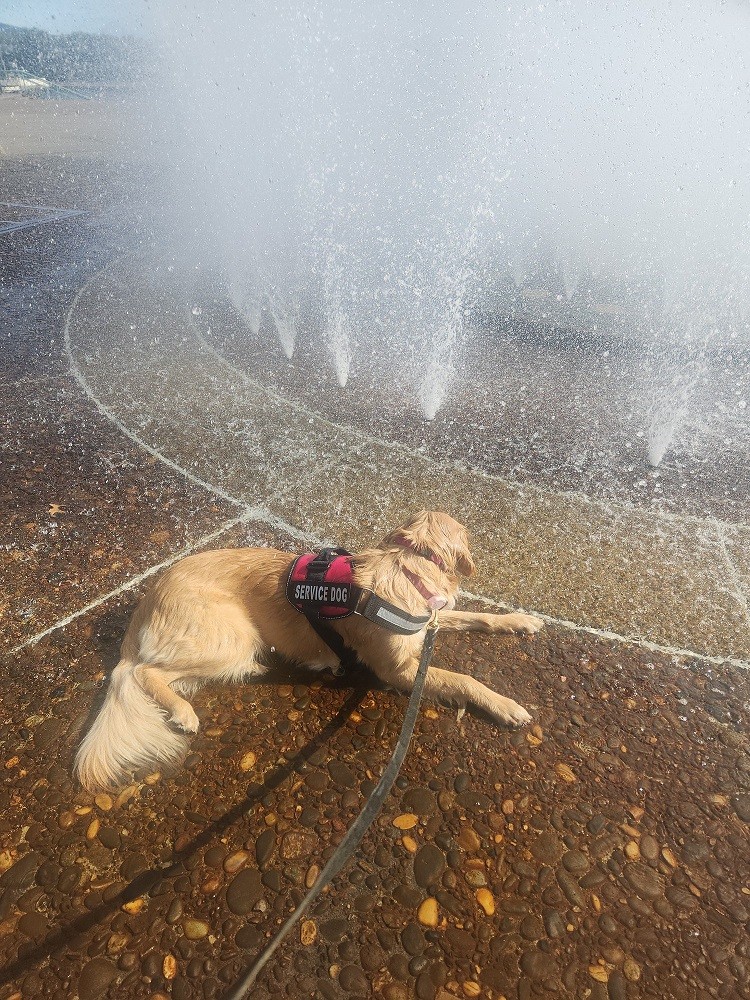
Will my service dog be social and interact with the public?
It’s important to understand that service dogs are working animals—not pets.
When they are with you in public or in a social situation, they are on the clock and need to be fully focused on their responsibilities.
They are not meant to be the center of attention for others, and they should not be flashy, overactive, or aggressive. They will be trained not to interact with others unless doing so is part of their job.
Angela mentioned that their service dogs got acquainted to being around other people, and they were able to learn how to continue to focus on their responsibilities even if others tried to interact with them or pet them.
Even though Stryder’s peers and teachers at school were not permitted to interact with the dogs, some interaction was unavoidable. Kristin explained that even if interaction is permitted or occurs in some environments or situations, the goal should be for those interactions to lead to more connection with the handler, not the service dog:
“They are not making friends with the dog—they are making friends with the person.”
Angela shared that in Stryder’s case, these not-quite-anticipated interactions were ultimately a positive, because they led to him being more vocal and confident about explaining why his service dogs are needed and what they do for him.
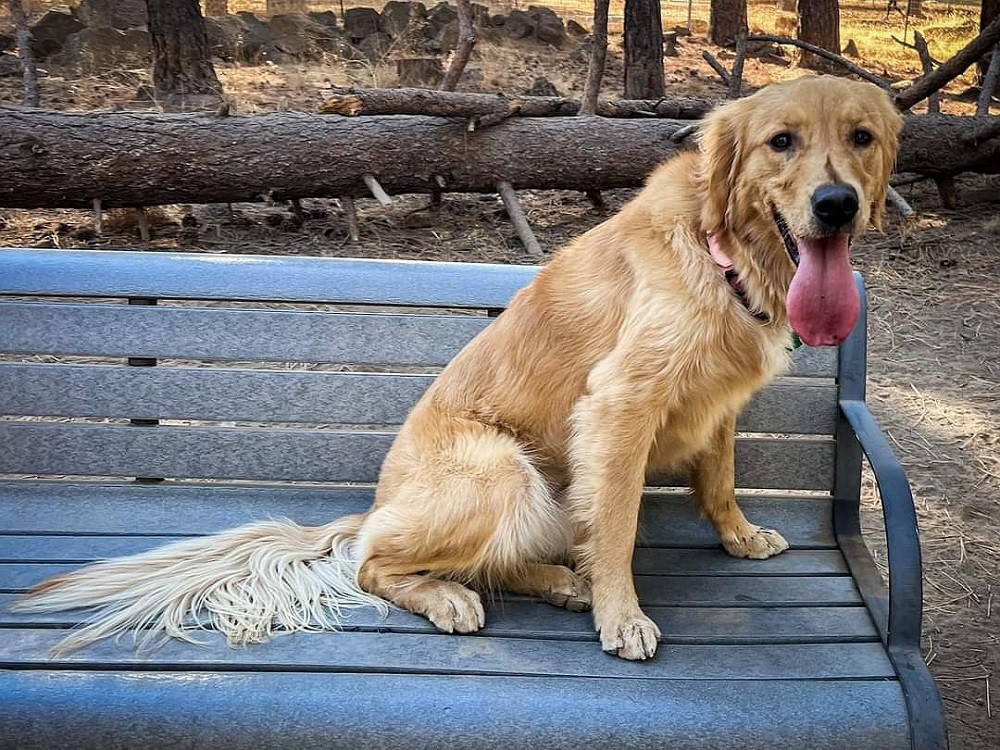
How can I help introduce the community to my service dog?
As Kristin explained:
“The more you can educate the community about this new tool, the better support you’ll have, and the more successful that partnership will be.”
In addition to their other trainings, Stryder took a two-week class to learn how to better advocate for service dog use in his community.
Coordinating directly with the businesses and environments where you’ll use your service dog is a must.
Angela explained that Stryder’s school holds an assembly annually to help students and staff understand service dogs.
Kristin recommended that if you engage in fundraising for a service dog, you can take community gatherings as an opportunity to educate others and introduce them to service dogs and how they work.
One other key aspect of introducing a service dog to your community is ensuring your service dog is ready for what they will face while they are out with you.
Angela recommended that you map out the locations and environments your service dog will be in to help visualize how your service dog will overlap with your community.
In Stryder’s case, for example, they wanted to get his service dogs accustomed to sitting on a school bus or taking a plane ride while remaining comfortable and non-distracted. All of these locations and interactions required training.

How much does a service dog cost?
Acquiring and training a service dog will typically cost between $35,000 and $55,000 per dog.
Training programs may offer grants, scholarships, or discounts to help reduce the cost of training to between $0 and $24,000. As Kristin explained:
“They don’t want you to take on the costs out of pocket—they want you to fundraise for the [remaining] cost.”
In addition to the initial expenditure, you should budget $150 to $200 per month in maintenance, recommended Kristin.
Beyond the cost of owning any pet, such as food and medication, keep in mind that your service dog may require more frequent grooming and vet visits because they will be in direct contact with public spaces so frequently.
You may be able to get discounts on food, medication, and services through your service dog training program if they have pre-established provider relationships. You can also ask about discounts on vet care and other needs if your service dog is licensed.
However, even if you are able to take advantage of some of these discounts, Kristin advised that you maintain a “true” budget of all the costs associated with your service dog.
It’s important to know exactly how much a service dog costs to maintain, as discounts may not always be there or be guaranteed for life.
Angela reiterated this point with an example of how switching providers can easily cause you to lose discounts or have to establish a new relationship for cost reductions.
Their family fundraises with Help Hope Live to assist with these care costs in addition to service dog training costs.
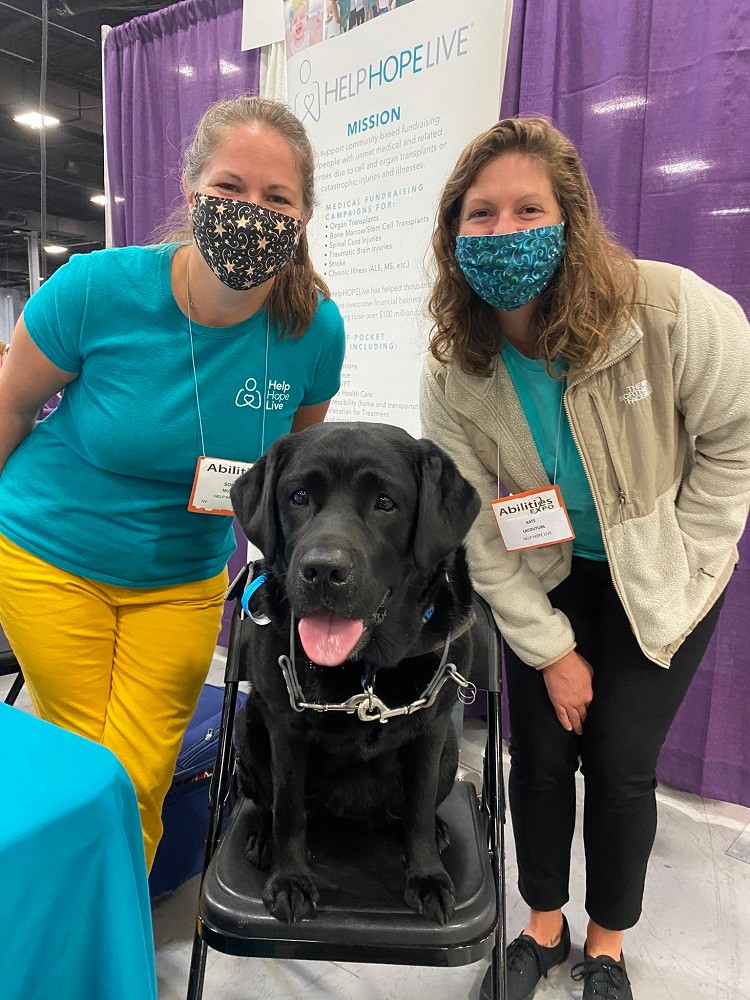
Can I fundraise for a service dog with Help Hope Live?
Yes: you can start a fundraising campaign with the nonprofit Help Hope Live for service dog costs, including acquisition, training, and care.
Angela and Kristin both strongly recommend starting a fundraising campaign with Help Hope Live for a service dog.
Fundraising may be necessary to cover the initial costs of training and the ongoing costs associated with owning a service dog.
As Kristin explained, fundraising with Help Hope Live will provide the maximum protection for your benefits as well as tax deduction opportunities and transparency that businesses and individual donors may want to see.
“We recommend that everyone get a Help Hope Live started.”
Kristin recommended being as transparent and open as possible with your community so donors and businesses can fully get behind your fundraising efforts.
“Help Hope Live is a great organization,” Angela said:
“Because we’re using Help Hope Live, people trust it, and they tend to give more when they know what it’s going to be used for.”
In addition to these benefits, Angela values that “Help Hope Live can directly pay a trainer or vet, which makes it so easy for us.”
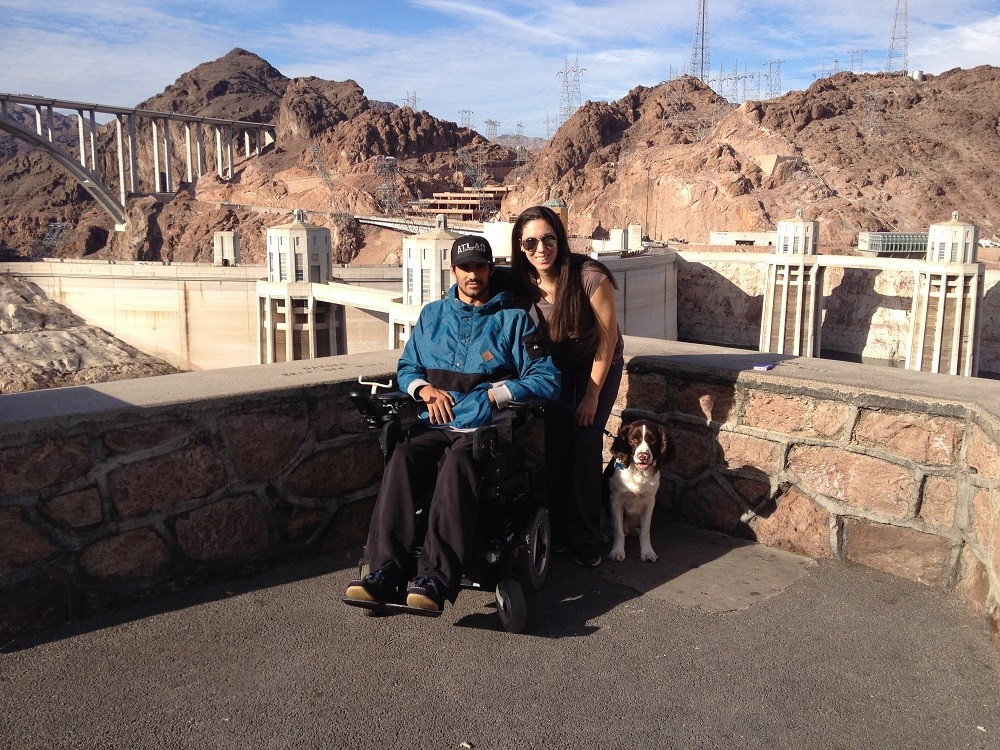
What are some tips for fundraising for a service dog?
Kristin raised $6,500 for her own first service dog with donations ranging from $2 to $1,000. Fundraisers can be unique to your community: Kristin has seen duck races, doghouse piggy banks for change collection, percentage-of-sales nights at local restaurants, and everything in between.
In Angela’s small town, fundraising has included setting up booths at local events and fairs, online fundraising, business cards and flyers, and more—and they are always looking out for new opportunities.
A big step for their family was learning how to engage help from others:
“I didn’t know how to fundraise, so I asked for help from other people who are good at it.”
Fundraising was not a one-off process for Angela:
“We are constantly fundraising, and it takes a lot of work, but don’t let that stop you from getting a service dog.”
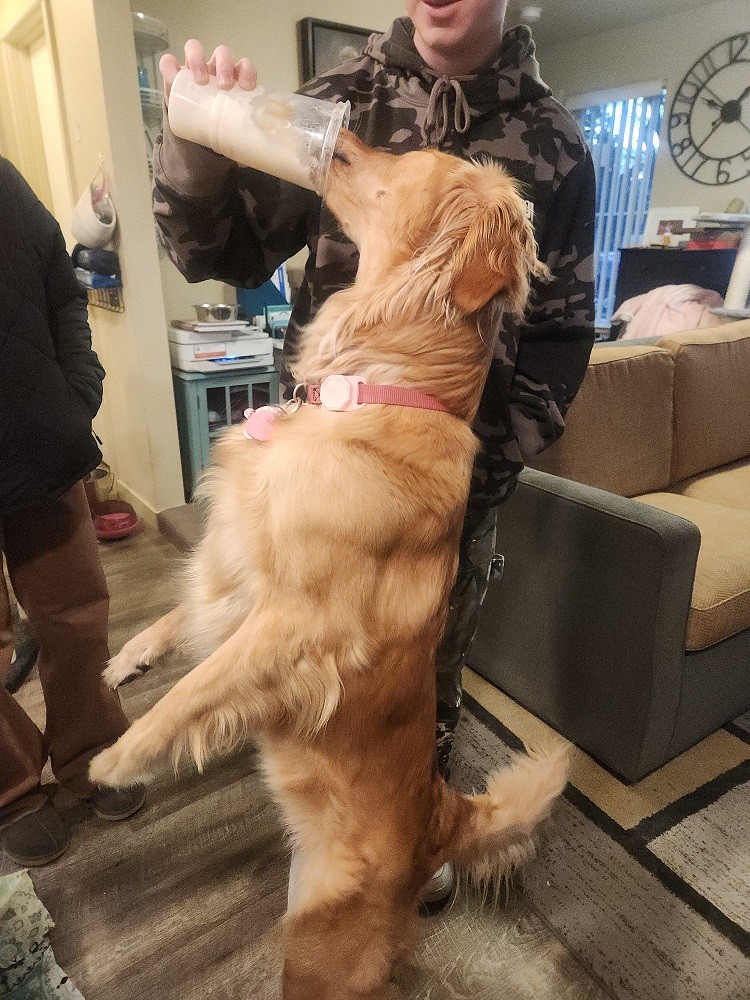
What is the best piece of advice for someone considering a service dog?
From Angela:
“Don’t let money be the reason you don’t go forward with a service dog.”
From Kristin:
“You deserve this. Don’t think that you’re not disabled enough or that someone else deserves it more than you. It’s about living the most accessible, high-quality life you can.”
What to Do Next
Contact Canines for Disabled Kids or start your service dog research on your own if you’d like to keep considering a service dog for yourself or a loved one.
If you’d like to fundraise for the out-of-pocket costs associated with service dog acquisition, training, or ongoing care, start an application with Help Hope Live online:
Next Time, Join Us Live!
The best way to learn about upcoming Hope Talks is to subscribe to our Latest blog.
You can also visit our Events page using the button below to see the Hope Talks we have scheduled right now, including our popular Virtual Wheelchair Fitness series:
Watch All Our Other Hope Talks
We’re dedicated to bringing you free, firsthand insights on diverse topics ranging from pregnancy with a disability to telling your fundraising story to cultivating hope after a medical crisis.
Watch our past Hope Talks on our YouTube playlist:


